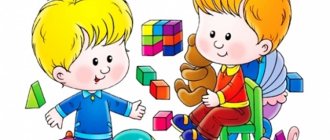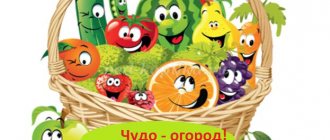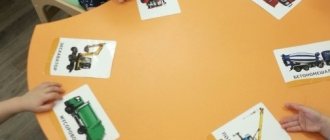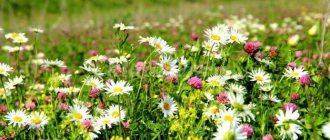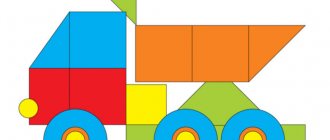Communication in kindergarten
Communication in kindergarten is the process of transmitting meaningful information, its emotional and intellectual content from the sender to the recipient, i.e. from a person, group to another person, group. Communication skills are extremely important for children, since we all live within society and, in one way or another, interact with it and other members of it.
In order to achieve success in work and personal life, we need to be able to communicate correctly and correctly, conduct dialogue, recognize our own and others’ emotions well, and so on.
Communication system in kindergarten. In preschool age, there are two spheres of communication - with adults and with peers. The question often arises: who does a child need more and with whom should children spend more time - with adults or with peers? In answering this question, it is important to emphasize that there cannot be an “either/or” opposition here. Both adults and peers are necessary for the normal development of a child’s personality. But their role in the lives of children is, of course, different. Communication with an adult and with a peer also develops differently. Non-situational forms of communication predominate in preschool age.
In the section of the site, communication in kindergarten for different groups contains many interesting publications for educators on teaching children on various topics:
- Communication second junior group
- Summary of organized educational activities on social and communicative development
- Application of information and communication technologies in the speech development of young children
- Abstract of the educational field in the educational field "Communication" in the second junior group of 3-4 years
- Forms and methods of developing communicative abilities in children of senior preschool age
- Abstract of the educational field "Communication" For the older (5-6 years old) group
- Individual development map for the socio-communicative area
- The importance of social and communication skills in the formation of tolerant consciousness of preschool children
- Communication skills of children 3-4 years old
- Summary of direct educational activities in the educational field “Communication” in the senior group of kindergarten
- Synopsis of educational activities in a multi-age kindergarten group
- Summary of organized educational activities for the 1st junior group in the educational field “Communication”
- Summary of direct educational activities in the field of “Communication” in the preparatory group of 6-7 years
- Notes on OO "Communication" in the second junior group
- Summary of direct educational activities in the educational field “Communication: speech development”
- Continuity in the formation of communicative and speech competence of children in the context of the implementation of the Federal State Educational Standard
- Implementation of the educational field of Communication through educational games in kindergarten
- Communication games in the children's club for creative and business communication
- Summary of direct educational activities in the educational field “Communication” speech development
- Summary of direct educational activities in the educational field “Communication” and “Artistic Creativity”
- Development of communicative relationships among children in kindergarten
- Games for children's communicative development
- Communication games in kindergarten
- Technologies of communicative games as a means of interaction between preschool educational institutions and families of kindergarten students
- Development of communicative qualities of preschoolers in the game
Development of communication skills in preschoolers. From early childhood, the baby learns the secrets of behavior in various situations at home, among peers, in public places, etc. The most important role at the stage of growing up is given to parents. Family members are the first to instill in the child the basic rules of behavior and the ability to clearly express one’s thoughts. This is necessary so that children can feel comfortable among others and communicate.
Understanding communication leads educators, teachers and psychologists to the understanding that it is still necessary to make every effort to establish, shape and develop communication skills in preschoolers. The principles and methods of developing children's communication also play an important role in this process.
The speech of a preschooler is a universal means of communication that helps convey feelings, knowledge, and wishes. Without words, it is difficult to ask for something or communicate your intentions. Communicative abilities of a preschooler - teach communication from childhood.
The main tasks of the communicative development of preschool children are in the family, in children's institutions, and in society. Ways to develop communicative qualities in children. The introduction of communication skills with other people occurs through play - for preschool children this is the optimal, most suitable way of learning. In addition, it allows educators to see the characteristics of each child and possible communication problems.
The success of the development of communicative activity in preschoolers depends on the degree of productivity of the process of consolidating speech skills and abilities acquired in classes throughout the day.
MAGAZINE Preschooler.RF
Direct educational activities (communication) in the senior group on the topic “Magic words” Educator: Khudyakova O. N. Program content: Educational objectives: Developmental objectives: Educational objectives: Vocabulary work: Vocabulary activation: hello, hello, goodbye, see you, bye, good morning, good afternoon, good evening, thank you, please, sorry. Enrichment of vocabulary: greeting, farewell, gratitude, request. Material and equipment: GCD procedure: Get up as soon as the sun rises (stretch, arms up) And quietly towards the window the beam will stretch out its hand to you - (extend your arms forward) You quickly put your palm up. Let's say hello to the sun: “Hello, sunshine!” (expose your palms to the sun) Let your mother see you, washed and shod. (run your palms over your face, bend down and touch your feet) Having tidied everything up, go straight to her (walk in place) And tell her: “Good morning!” (repeat “Good morning!”) And then with a smile, in a song, go out to the grass, people, birds... (spread your arms wide to the sides) And your day should turn out to be fun, interesting! (smile at each other) The bear came out of the den, (walk in place) Looked around at the threshold. (look around) To quickly gain strength, the bear twisted its head. Mishka counted to five, Mishka lifted the weights - One, two, three, four, five. (under the count, straighten and bend your arms bent at the elbows) I will lower the weights - One, two, three, four, five. (bend over, straighten and bend your arms) I will tense my muscles.(bend your elbows, show “muscles”)
On one side of the screen there is a fortified house.
Mishka appears on the other side.
Educator: Children, look who is visiting us today! (Bear)
Why is Mishka silent and doesn’t say anything? Guys, please tell Mishka what to say when meeting? (Hello)
Bear: Hello, guys!
Educator: Bear, why are you so sad?
Bear: I'm lost and can't find my way home. Help me!
Educator: Mishka, we will be happy to help you if you ask correctly. Children, what magic word do we say when we ask for something? (Please)
Bear: I got it! Guys, please help me find my way home!
Educator: Go, Mishka, straight along this path and don’t turn anywhere.
Educator: The bear walked along the path and met the Hare.
Bear: Get out of my way, Hare, let me pass!
Educator: But the Hare stands and does not leave. Guys, why do you think? (Because you need to ask politely, say “please”) That’s right, but first you need to say hello. Do you understand, bear?
Bear: Got it! Hello, bunny! Please allow me to pass.
Bunny: Hello, Misha! Come in, please.
Educator: And the bear got ready to move on. Wait, Misha! Have you forgotten anything?
Bear: No. I didn’t have anything in my paws.
Educator: Can you guys tell Mishka what he should have done? (Tell Bunny “thank you” and “goodbye”).
Bear: Thank you, Bunny! Goodbye!
Bunny: please, Mishenka! See you!
Educator: Mishka went further, and the Fox met him.
Bear: Let me remember what the guys taught me. Hello, Lisa!
Lisa: Hello, Mishenka!
Bear: Be kind, please help me find the way to the house.
Lisa: I’ll be happy to help. come with me, I will lead you straight to the house!
Bear: And here is my house! Thank you, Lisa!
Lisa: Please, Misha! See you!
Bear: And thank you guys, you suggested amazing, magical words. I got it! Now I will always and everywhere say magic words, because they help so much! And everyone who hears them becomes kind and friendly. Goodbye, guys!
Hey Misha! I learned some polite words from you guys. What did we learn in class today? (Say hello, say goodbye, address each other and elders politely, remember polite words). Never forget these words, and you will see how kind and welcoming everyone around you will become.
| Next > |
Lesson summary: “What is communication.”
Lesson “What is communication”
Educator:
- Hello, dear guys! Today we will start talking to you about communication. In classes we will learn to communicate, we will receive not only useful knowledge and skills, but also a good mood. Who can try to reveal the concept of “communication”?
(Communication
is the interaction of people with each other for the purpose of transferring knowledge, experience, and exchanging opinions. In contrast to simple interaction, in the process of learning, each other discovers themselves. I am mine to you, and you are mine to me.)
Educator:
Tell me, is your communication with other people always successful and evokes positive emotions?
Do you need to learn to communicate? Why do you think this is needed? (Every person needs communication in order to feel like a human being.)
The teacher leads the children during the discussion to the conclusion that communication plays an important role in a person’s life and communication needs to be learned so that it brings benefit and joy to a person.
Exercise "Greetings"
Educator:
Now, guys, let's sit in a circle and learn greetings that need to be sung, not spoken.
Teacher and children:
Good morning, Lera! (They smile at the girl and nod their head to her.)
Good morning, Lena!..
(They greet all the children in a circle.)
Good morning, Marina Borisovna!
Good morning, sun!
(Everyone raises their hands, then lowers them.)
Good morning, sky!
(Similar movement with hands). Good morning to all of us! (Everyone spreads their arms to the sides, then lowers them.)
Educator:
Well done boys! You and I have greeted each other, and now let’s agree on the rules of work in our classes. Look at the rules written on the board.
Sample rules:
❖Active work during the lesson for each participant +
❖Attention to the speaker +
❖Trust in each other +
❖ Inadmissibility of ridicule + ❖ Interrupting each other ❖ Everyone’s right to their own opinion +
What rules can be adopted immediately? Which ones need to be changed? Maybe something needs to be added?
Work on the topic
Educator:
It's hard to imagine life without communication. It enters our lives early. If we analyze with whom and how we communicate, then it will probably become clear that communication quite often causes us trouble. Have you ever wondered why this happens?
Numerous studies indicate that quarrels between people most often arise due to a lack of communication culture. In quarrels, people often blame others. Let's try to check with a test how we communicate.
Test game “It’s nice to be with you”
communicate"
Educator:
Whether we know how to communicate is best known by those with whom we communicate. You have to constantly communicate with your peers. Let's check what kind of communication you are like.
To do this, children are given small pieces of paper to write on (the number of pieces of paper is equal to the number of people in the group), on which they write the corresponding points for each child. The breakdown of points is written on the board:
+ 2 - it’s very pleasant to communicate with you;
+ 1 - you are not the most sociable person;
Oh - I don’t know, I don’t communicate with you much;
-1 - sometimes it’s unpleasant to communicate with you;
— 2 — it’s very difficult to communicate with you.
Each piece of paper is folded and the name of the person to whom the note is intended is written on the back. All the notes are collected in a box, and the teacher distributes them to the “addressees”, warning that everyone needs to count the points independently after the lesson.
Educator:
If you don’t like the results, then don’t be upset, but rather remember that everything depends on you. If we don't know how to communicate with others, then we are unhappy. You can learn to communicate, but this requires desire. You need to comprehend the art of communication and work on yourself. Let's learn to communicate together.
Now complete this task. Write on one piece of paper: “I want to be treated kindly and gently,” on another piece of paper write: “I want to be treated strictly and demandingly.” Give me the piece of paper on which the communication option that is acceptable to you is written.
Lesson Analysis
Educator:
What did you like about the lesson? What would you like to change? Let's evaluate our activity. Give your rating: raise the required number of fingers of one hand to the count of “three”.
In conclusion, the teacher reports what kind of communication the majority of participants chose (previous task).
Assignment for the next lesson
Educator:
After class, calculate the points you received on the “It’s nice to talk to you” test and write the result in your notebook. We will begin our next lesson by discussing this.
Everyone (in turn) will take a seat on a chair in the center, and participants will answer the question “What is he like?” To do this, they must select one or more definitions from the same list of words on the poster. The person sitting in the center marks those words that coincide with his definition (“I think that I ...”). The number of matches is counted.
Lesson Analysis
Educator:
Let's evaluate our activity. Give your rating: raise the required number of fingers of one hand to the count of “three”.
What did you like about today's lesson? What difficulties did you experience? Who is more difficult to evaluate: yourself or others?
Educator:
And now the task for the next lesson.
Make a drawing called “I am in the sun.” Draw a circle and write the letter “I” in the center. Draw rays from the boundaries of the circle: their number should correspond to the marked matches in your characteristic. The coincidence of positive qualities should be drawn with a pencil, and negative ones -
red blue.
Summary of educational activities on the social and communicative development of older preschoolers
Summary of educational activities on the social and communicative development of children in the senior group of the MDOU Nekouz kindergarten teacher Baranova T.M. “We are so different” Program content Educational objectives: - formation of ideas about twins; - development of the concept that all children are different, differ in appearance, voice, clothing, habits, hobbies, age; — development of the ability to distinguish between clothes, toys, and objects used by infants, preschoolers, and schoolchildren. Developmental tasks: - development of auditory attention, observation; - activation of words in speech: twins, baby, preschooler, schoolchild; - development of the ability to compare and correlate objects of activity with the child’s age. Educational objectives: - developing the ability to be attentive towards each other and other people; - fostering interest and a friendly attitude towards children, peers and older children. Methods and techniques: surprise moment, outdoor game, questions, TRIZ technique “What would happen...”, comparison, use of illustrations, audio recordings, modeling, game exercise, encouragement, drawing a self-portrait. Equipment: magnetic board, ball, cards with images of children of different ages (baby, preschooler, schoolchild), the game “Who needs it,” sheets of paper, pencils, paints, a mirror for each child. Preliminary work: examination of illustrations depicting children of different ages, game “What do boys need, what do girls need?”, conversation about children’s hobbies.
Progress of the situation The group includes Dunno. Dunno: Hello children! Hello adults! There are so many of you here. How different you all are. I want to get to know you and learn a lot of interesting things about you, so that I can then tell my friends in Sunny City. I invite everyone to hold hands and smile at each other (holding hands) Educator: Hello, Dunno! We are all glad to meet you. All the guys want to tell a lot of interesting things about themselves, and the game “Tell about yourself” will help us with this (to the music, children pass the ball, and whoever the music stops on tells something about himself) Dunno: Can I start! My name is Dunno, I really like to play with my friends. Game "Tell me about yourself."
Dunno: Oh, so many different names, different faces!
No, I won't remember all of you! It would be nice if everyone were the same: with the same names, voices, faces. Then it would be easier for me to remember you. Educator: No, Dunno, all our children are different and we don’t want them all to be alike in everything, like two peas in a pod. Really, guys? Educator: Let's think about what will happen if all the children are the same (children's answers) Dunno: Well, okay, you convinced me, well done. I will try to remember you all. Educator: Dunno, we can tell you a lot of interesting things about ourselves and other children who go to kindergarten. Sit on the chairs with your children. Educator: Yes, children, you and I are all different. Do you know that people who are identical in appearance still exist? Do you know, Dunno, what they are called? Dunno: No! Do you know? Educator: They are called twins. There is a knock on the door, twin boys come in and say hello.
Educator: I invited the boys from the preparatory group to visit. These are twin brothers - Savely and Maxim. They were born on the same day, to the same mother. And they have the same birthday. You know them all and have played with them on walks more than once. See how they are similar? (children's answers) How are they different? (children's answers) And now I suggest everyone, both the children and the guests, to relax a little.
Physical education minute. One-two-three-four-five We will jump and gallop, The right side bent over - One-two-three The left side bent over One-two-three. Now let’s raise our hands and reach for the cloud, One-two-three-four-five And we all sit down again. (children sit down) Twin boys: We enjoyed visiting you, but it’s time to return to the group. We want to give you a game that we love to play with our friends (the boys say goodbye, leave)
Educator: Now let's see what the boys gave us. There are pictures in the box (places them on the board) Who is this? (children) Are they all the same age, do you think? Who is this? (schoolboy) Who is this? (baby, baby) And this? (preschooler) I suggest that one of you post the pictures in order as the age of the children changes. One of the children goes to the board, puts the pictures in order (infant-preschooler-schoolchild) and tells. Educator: Yes, look, children differ not only in hair color, eyes, clothes, but also in age. A child is born, and he is called ... (baby, baby), he has grown a little, went to kindergarten, and now he is already (preschooler), time has passed quickly in kindergarten, it’s time to get ready for school, and everyone will call the former baby (schoolboy ) Who are you guys - babies, schoolchildren or preschoolers? (children's answers) Oh, look, there are also pictures in the box with different objects drawn on them (show a few pieces). Now I will give them to you, and we will play with them. Dunno, please help me hand out the cards (they are handing out) Look carefully to whom the item you have drawn may belong to - a baby, a preschooler or a schoolchild. And find the right place for the picture on the board (children attach cards - under the picture with the baby there are objects for him, etc.) Let's look at whether all these items are needed (for the baby, etc.) Educator: Dunno, do you know that People can also be distinguished by their voice. Now we will all play our favorite game “Snail”. Purpose of the game: recognize your friend by voice. Equipment: snail mask-cap. Progress of the game: the driver (snail) stands in the middle of the circle, he is blindfolded. Each of the players, changing their voice, asks: “Snail, snail, Stick out your horns, I’ll give you sugar, A piece of pie. Guess who am I." The one whose voice the Snail recognizes becomes the Snail himself. Educator: Dunno, did you like it with us? Dunno: Yes, very much! You are all so different, kind, funny and very interesting to be with. I will definitely tell my friends in Sunny City about you, but I won’t be able to show them what you are like... Educator: How can I help you, Dunno? What do you guys think can be done? (take a photo, but don’t have a camera, or you can draw a portrait of each and give it to Dunno). Educator: Of course, you can draw your own portrait for everyone, but don’t forget that you don’t look alike, everyone has their own eye color, hair color, and favorite clothes. There is a mirror on the table in front of each child, the children draw self-portraits and give them to Dunno.
